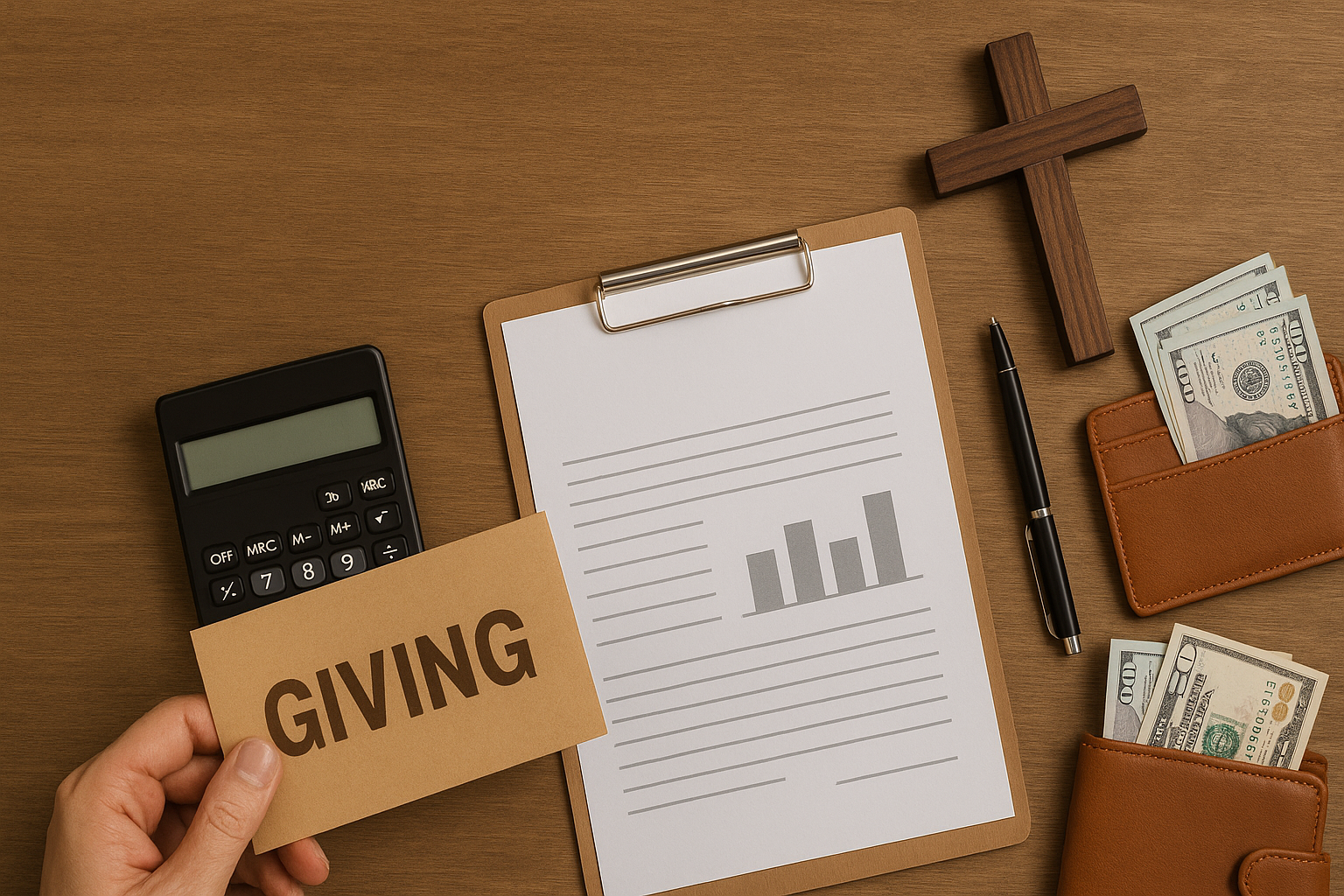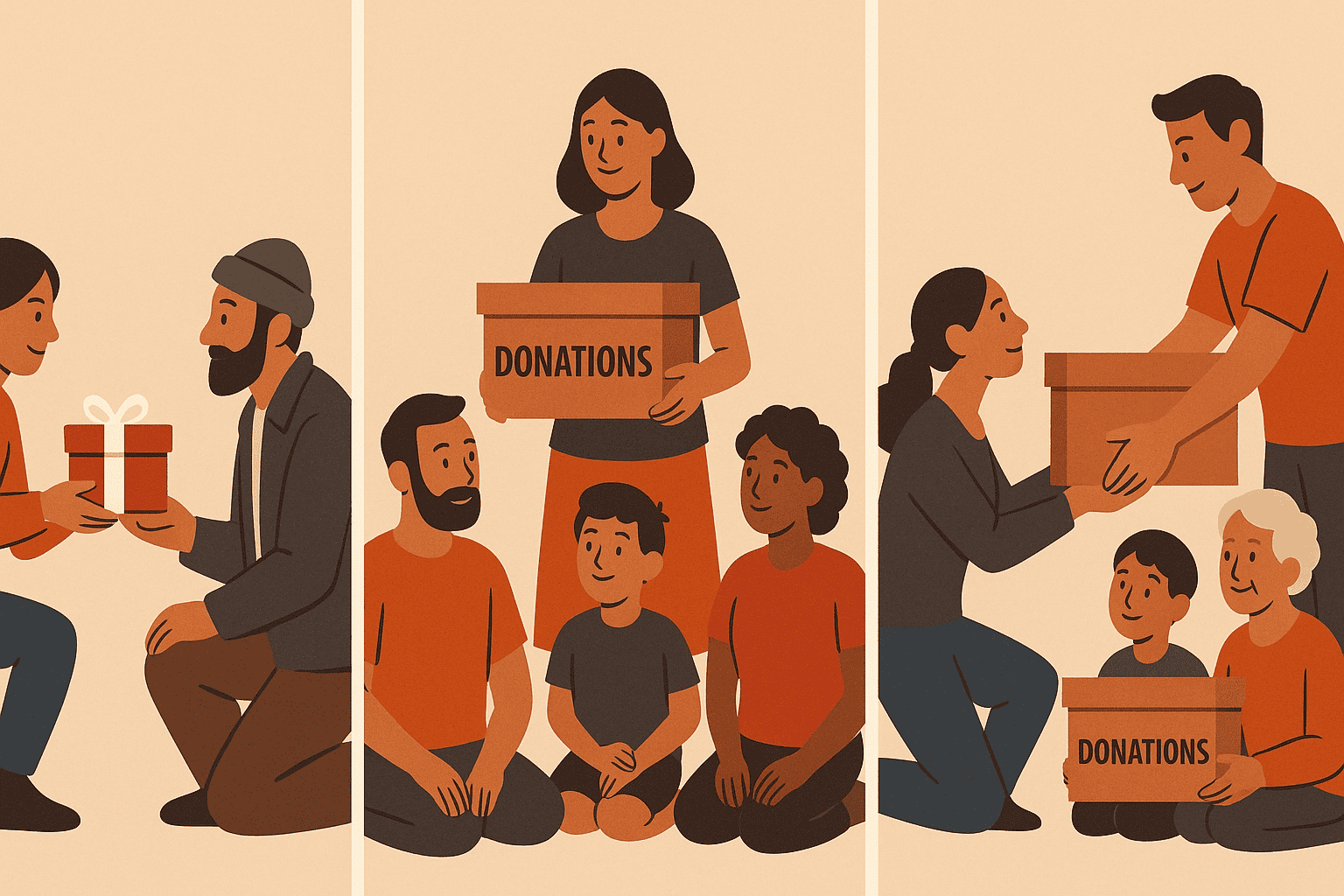The One Big Beautiful Bill Act (OBBBA), signed into law by President Donald J. Trump on July 4, 2025, represents one of the most significant overhauls to the U.S. tax code in recent years. This comprehensive legislation introduces sweeping changes that fundamentally reshape both charitable giving incentives and tax planning strategies for individuals, corporations, and nonprofit organizations. Understanding these changes is crucial for donors, tax professionals, and charitable organizations as they navigate the new landscape effective for taxable years beginning after December 31, 2025.
Key Charitable Deduction Changes
Enhanced Non-Itemizer Benefits
One of OBBBA’s most notable provisions is the permanent expansion of charitable deductions for taxpayers who don’t itemize their deductions. The legislation increases the charitable deduction limit for non-itemizers from $300 for single filers ($600 for joint filers) to $1,000 for single filers ($2,000 for joint filers). This change makes charitable giving more accessible to middle-income taxpayers who benefit from the standard deduction but previously couldn’t deduct charitable contributions.
This enhancement addresses a long-standing concern in the charitable sector, where the high standard deduction amounts established by the Tax Cuts and Jobs Act of 2017 reduced the number of taxpayers who could benefit from charitable deductions. By allowing non-itemizers to claim up to $1,000 ($2,000 for joint filers) in charitable deductions above the standard deduction, OBBBA democratizes the tax benefits of charitable giving.
New Floor on Charitable Deductions
OBBBA introduces a 0.5% floor on charitable deductions for individuals, meaning taxpayers can only deduct charitable contributions that exceed 0.5% of their adjusted gross income (AGI). This provision represents a significant shift that will particularly impact smaller donors and could influence giving patterns across income levels.
For example, a taxpayer with an AGI of $100,000 would need to contribute more than $500 to charity before any deduction becomes available. This floor mechanism is designed to offset some of the revenue costs associated with other provisions in the bill but may discourage smaller charitable gifts or encourage donors to concentrate their giving to exceed the threshold.
Impact on High-Income Donors
Reduced Value for Wealthy Philanthropists
High-income donors may face reduced value from charitable deductions under OBBBA, creating a complex landscape for affluent philanthropists. The legislation includes various limitations on itemized deductions for high-income taxpayers, potentially reducing the after-tax cost benefits that have traditionally motivated substantial charitable gifts.
The bill includes additional limits imposed on itemized deductions for top bracket taxpayers, which could significantly impact the tax efficiency of charitable giving strategies for wealthy individuals. This represents a fundamental shift from previous tax policies that generally provided greater charitable incentives for higher-income taxpayers.
Strategic Timing Considerations
Given these upcoming changes, 2025 may be a potentially strategic time to accelerate charitable giving. Wealthy donors and their advisors should consider timing strategies to maximize the value of charitable deductions before the new limitations take full effect. This might include:
Bunching Strategies: Concentrating multiple years of planned charitable contributions into 2025 to maximize deductions under current rules while exceeding the new 0.5% floor in future years.
Donor-Advised Funds: A donor-advised fund may be worth considering for timing purposes, allowing donors to claim immediate deductions while distributing grants to charities over multiple years.
Non-Cash Gifts: A mix of cash and non-cash gifts may lead to greater impact as the legislation introduces new complexities for itemizers.
State and Local Tax Deduction Changes
Temporary SALT Cap Increase
OBBBA temporarily quadruples the state and local tax (SALT) deduction to $40,000 starting in 2025, from $10,000 under the original TCJA. This change particularly benefits taxpayers in hightax states, but its interaction with charitable giving strategies creates new planning opportunities and challenges.
The SALT limit will increase by 1% per year between 2026 and 2029, providing some inflation protection but creating a temporary window for enhanced deductions. However, high-income taxpayers may see limited benefits due to the phasedown for taxpayers with modified AGI in excess of $500,000.
Estate Planning and Charitable Giving
Permanent Estate Tax Exemption Extension
OBBBA eliminates the scheduled reduction in estate tax exemptions that was set to occur on January 1, 2026. The current high exemption amounts, standing at $13.99 million in 2025, will continue rather than reverting to an estimated $7 million per individual.
This permanence of high estate tax exemptions has significant implications for charitable estate planning strategies. Donors who were previously motivated to make lifetime charitable gifts to reduce potential estate tax exposure may need to reconsider their strategies. The reduced estate tax pressure could lead to:
- Decreased urgency for charitable remainder trusts and charitable lead trusts
- Potential reduction in charitable bequests as estate tax motivation diminishes
- Greater focus on income tax benefits rather than estate tax benefits for charitable planning
Corporate and Institutional Impacts
University Endowment Tax Changes
The legislation increases the college and university endowment excise tax on private colleges and universities that have income-producing non-charitable use assets of over $750,000 per student from 1.4% up to 8%. This dramatic increase will significantly impact large university endowments and may influence their investment strategies and spending policies.
Effects on Nonprofit Organizations
The changes in OBBBA will have varied impacts on different types of charitable organizations:
Smaller Charities: The 0.5% floor may reduce small donations, potentially impacting grassroots organizations that rely on numerous smaller contributions.
Major Gift Organizations: Changes to high-income donor incentives may require these organizations to develop new cultivation and stewardship strategies.
Universities and Large Nonprofits: The increased endowment taxes will create additional operational pressures and may influence fundraising strategies.
Strategic Planning Recommendations
For Individual Donors
- 2025 Acceleration: Consider accelerating planned charitable gifts into 2025 before new limitations take full effect.
- Threshold Planning: Calculate the 0.5% AGI threshold to ensure charitable contributions exceed the floor for maximum benefit.
- Bunching Strategies: Group charitable contributions in alternating years to maximize deductions above the floor.
- Donor-Advised Funds: Utilize these vehicles for timing flexibility while claiming immediate deductions.
- Professional Guidance: Work with tax professionals to navigate the new complexities and optimize charitable giving strategies.
For Charitable Organizations
- Donor Education: Help donors understand how OBBBA affects their giving strategies and tax benefits.
- Planned Giving Adjustments: Revise planned giving strategies to account for reduced estate tax pressure and changed income tax incentives.
- Campaign Timing: Consider accelerating major gift campaigns to take advantage of favorable transition timing.
- Diversification: Develop strategies to maintain support as traditional major donor incentives change.
Looking Forward
OBBBA introduces significant changes to the tax treatment of charitable contributions for both corporations and individuals, with the potential to reshape charitable giving strategies for donors and the nonprofit organizations that rely on their support. The OBBBA reshapes both how much a client can deduct for charitable contributions and which clients can benefit from these deductions in the first place.
The legislation represents a complex balancing act between encouraging charitable giving through enhanced non-itemizer deductions while limiting benefits for high-income taxpayers through floors and caps. The long-term impact on charitable giving levels will depend largely on how donors and their advisors adapt to these new rules.
Conclusion
The One Big Beautiful Bill Act fundamentally alters the landscape of charitable and tax planning. While it democratizes charitable deductions for non-itemizers and provides temporary relief for SALT deduction limitations, it also introduces new complexities and constraints that require careful navigation.
Success in this new environment will require proactive planning, strategic timing, and close collaboration between donors, tax professionals, and charitable organizations. The transition period leading up to the effective date provides a critical window for implementing strategies that maximize benefits under both current and future rules.
As the charitable sector adapts to these changes, organizations and donors alike must remain flexible and informed to continue advancing philanthropic goals while optimizing tax benefits. The full impact of OBBBA on charitable giving patterns will likely unfold over several years,
Please note: All charts and numbers are for illustration purposes only. Accuracy is neither warrantied nor implied. We are not attorneys or tax advisors. This information is educational only. Not to be considered as advice or recommendations. It is imperative that you consult with a tax advisor and/or attorney when considering any of these concepts. In addition, it is critical that the attorney, tax advisor, and financial advisor are knowledgeable and practiced in these areas.
If you would like help finding such an advisor, we will be glad to introduce you to an experienced planner with your best interest in mind. Please give us a call at 1-800-522-4324













